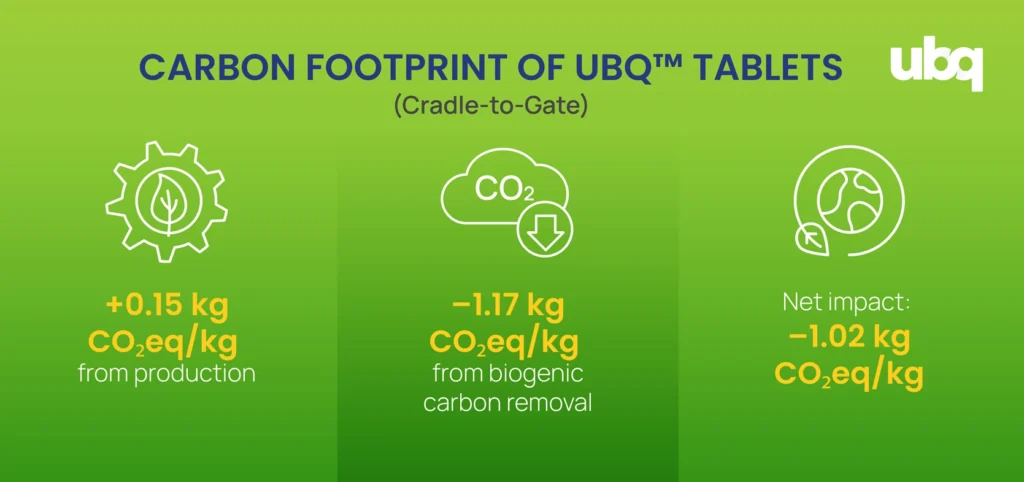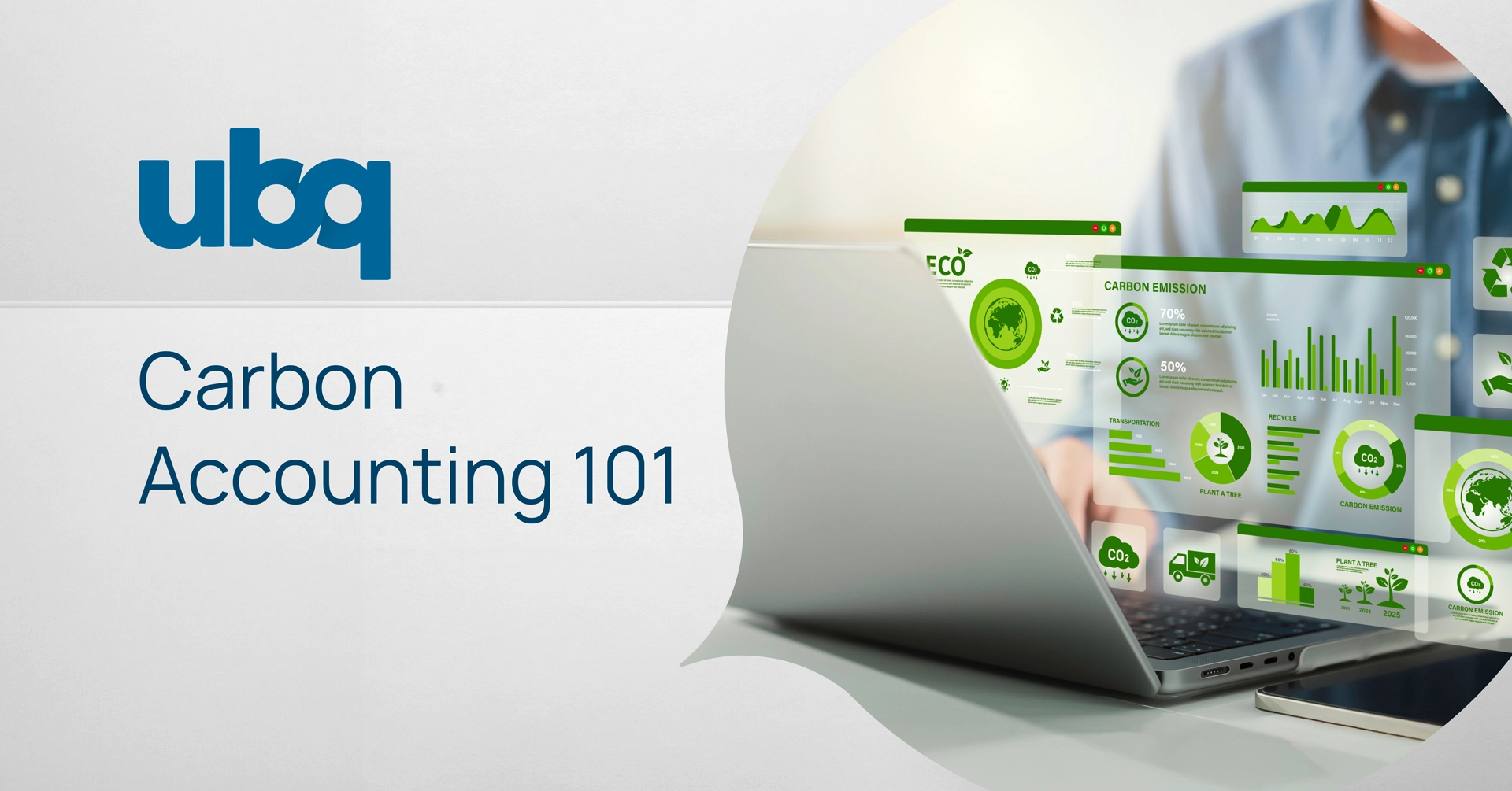Carbon accounting is the systematic process of identifying, quantifying, and reporting the greenhouse gas (GHG) emissions tied to an organization’s operations, value chain, and products. These emissions are measured in carbon dioxide equivalent (CO₂eq) to capture the full climate impact of all major greenhouse gases, including methane and nitrous oxide.
But carbon accounting goes beyond calculation. It helps organizations understand their climate impact by creating an emissions inventory and identifying sources of emissions across their operations and value chains
What Are the Benefits of Carbon Accounting?
Effective carbon accounting gives companies the clarity and structure needed to take real climate action – turning emissions data into business intelligence. Whether driven by regulation, investor expectations, or internal sustainability goals, carbon accounting unlocks critical benefits across operations, strategy, and communications.
Key Benefits of Carbon Accounting
Map Emissions Across Operations and Value Chains
Carbon accounting helps companies pinpoint emissions hotspots across Scopes 1, 2, and 3, revealing where the biggest impacts occur and where the greatest opportunities for reduction exist. This insight enables smarter resource allocation, risk mitigation, and supplier engagement.
Comply with Global Climate Regulations
As mandatory disclosure rules tighten, such as the EU’s Corporate Sustainability Reporting Directive (CSRD) and the U.S. SEC’s proposed climate disclosures, carbon accounting ensures that companies can report emissions transparently, credibly, and in alignment with regulatory standards.
Strengthen ESG Positioning
Transparent emissions reporting strengthens a company’s environmental, social, and governance (ESG) profile, building trust with investors, customers, and business partners. It also prepares businesses for sustainability-linked financing and procurement opportunities.
Set and Track Science-Based Targets
With detailed emissions data, companies can set credible, science-based targets that align with global climate goals, such as those established by the Science Based Targets initiative (SBTi). Carbon accounting allows for meaningful progress tracking toward those commitments.
Drive Innovation and Business Transformation
The process often reveals untapped opportunities for improving materials, processes, and energy use. By identifying ways to reduce emissions, carbon accounting catalyzes innovation, supporting the transition to circular inputs, climate-positive materials like UBQ™, and long-term operational efficiency.
Core Standards and Methods in Carbon Accounting
Carbon accounting relies on globally recognized frameworks to ensure consistent, transparent, and verifiable reporting. Two of the most widely adopted standards are the Greenhouse Gas (GHG) Protocol and ISO 14064.
GHG Protocol
GHG Protocol is considered the foundational framework for measuring corporate greenhouse gas emissions. It classifies emissions into three categories, or Scopes: Scope 1 includes direct emissions from owned or controlled sources, such as company vehicles or on-site fuel combustion. Scope 2 covers indirect emissions from the purchase of electricity, heating, or cooling. Scope 3, often the most substantial, encompasses all other indirect emissions that occur across the value chain, such as raw material extraction, transportation, product use, and disposal.
ISO 14064
ISO 14064 complements the GHG Protocol by offering a rigorous standard for quantification, monitoring, and third-party verification of GHG emissions. It is particularly valuable for companies that need auditable data or are preparing for regulatory disclosure under programs like the EU CSRD or U.S. SEC climate rules.
Once an organization defines its reporting boundaries and selects a framework, the next step is choosing the right method for calculating emissions.
Input-based methods
Input-based methods rely on activity data, such as liters of fuel used or kilometers traveled, paired with standard emissions factors. This approach is relatively easy to implement but can be less accurate due to reliance on averages.
Output-based methods
Output-based methods offer greater precision by measuring direct emissions from outputs like product volume or emissions stacks. These methods are more data-intensive but ideal for high-impact or regulated industries where accuracy is critical.
Hybrid method
The hybrid method combines input and output data to balance completeness with feasibility. This is especially useful for Scope 3 emissions, where information may be fragmented across suppliers and operational systems.
Spend-based estimation
Spend-based estimation is also common, particularly when Scope 3 data is limited. It uses financial expenditure data and maps it against industry-average emissions factors. While convenient, this method offers less granularity and may be insufficient for companies pursuing product-level carbon reductions or climate claims.
Ultimately, the choice of standards and methods depends on a company’s objectives, available data, and desired level of precision. For businesses incorporating circular materials like UBQ™, adopting more robust methodologies, such as hybrid or output-based approaches, can ensure that the carbon benefits of climate-positive materials are captured accurately and credibly.

Challenges in Carbon Accounting
Despite its value, carbon accounting comes with a range of operational and strategic challenges, especially as expectations for transparency and accuracy increase.
Data Quality & Access
Accurate carbon accounting depends on complete, granular data. Yet obtaining reliable activity-level data from all departments and suppliers, particularly for Scope 3 emissions, is notoriously difficult. Many organizations are forced to rely on estimates or proxy data due to inconsistent reporting or lack of access.
Emissions Factor Accuracy
Emission factor accuracy is a critical aspect in GHG accounting that directly influences the reliability of emissions estimates.
Many companies use generic emissions factors that don’t reflect the actual impact of their operations. For industries such as construction, agriculture, and consumer goods, this can result in misleading calculations. There is a growing demand for sector- and region-specific emissions factors, but these remain inconsistently available, complicating benchmarking and decision-making.
Scope 3 Complexity
Scope 3 emissions span the entire value chain, from raw material sourcing and transport to product use and end-of-life disposal. Tracking these emissions involves coordinating with potentially hundreds or thousands of actors, making it one of the most complex and resource-intensive parts of carbon accounting.
Disparate Systems
Relevant data often resides in disconnected silos across finance, procurement, operations, and sustainability teams. Without integrated systems, it becomes difficult to automate or standardize data collection and analysis, resulting in inefficiencies and potential inaccuracies.
Regulatory Pressure
Climate disclosure requirements are evolving rapidly. Regulations such as the EU’s Corporate Sustainability Reporting Directive (CSRD) and upcoming rules from the U.S. SEC demand more detailed, auditable, and timely emissions data. For many companies, especially multinationals, meeting these requirements is a growing source of pressure.
Resource Intensity
Implementing comprehensive carbon accounting is a significant undertaking. It requires dedicated tools, trained personnel, cross-functional coordination, and ongoing investment—particularly for companies managing global supply chains or diverse product portfolios.
The Impact of Carbon Accounting
When implemented with rigor, carbon accounting enables organizations to transform emissions data into tangible climate action. By systematically measuring and analyzing greenhouse gas emissions across all scopes, companies can move from general reporting to strategic decision-making that reduces emissions and builds long-term value.
- One of the most immediate benefits is the ability to identify emissions hotspots across operations and the broader value chain. Whether it’s from direct emissions related to on-site fuel combustion or indirect emissions from purchased electricity and transportation, mapping out these sources allows for smarter resource allocation and risk mitigation. This insight is crucial in managing climate-related risks and setting credible decarbonization pathways.
- Carbon accounting also enables targeted interventions for high-impact processes. With accurate carbon accounting data and clearly defined emissions factors, companies can pinpoint where operational shifts, such as process optimization, energy efficiency upgrades, or material substitutions will deliver the greatest carbon reductions.
- Procurement is one area where carbon accounting methodologies drive meaningful change. By embedding emissions data into supplier assessments, companies can prioritize low-impact alternatives and support circular material solutions. For example, choosing UBQ™, a climate-positive thermoplastic made from landfill-destined waste, allows businesses to significantly reduce Scope 3 emissions compared to conventional materials. In doing so, carbon accounting becomes not just a compliance tool, but a catalyst for sustainable innovation.
- These insights also enhance transparency and communication. Whether reporting to investors, disclosing through frameworks like the GHG Protocol or the Science Based Targets initiative, or responding to sustainability reporting standards such as the EU CSRD, a robust carbon accounting program ensures emissions disclosures are verifiable, consistent, and aligned with global expectations.
In short, carbon accounting principles enable businesses to quantify emissions with confidence, identify actionable pathways toward net zero, and demonstrate progress with integrity. When paired with solutions like UBQ™, it helps companies shift from measuring carbon to meaningfully reducing it, turning data into impact.

How to Start With Carbon Accounting
Launching a carbon accounting program begins with setting a clear direction and aligning your internal teams around common goals. Whether your priority is regulatory compliance, stakeholder transparency, or accelerating your path to net zero, starting with the right structure ensures long-term success.
Define Your Objectives
Start by clarifying your primary motivation. Are you aiming to comply with climate disclosure regulations like the EU CSRD or the SEC? Do you want to position your company as a sustainability leader, improve operational efficiency, or meet investor and customer expectations? Your objectives will shape the scope, depth, and pace of your carbon accounting program.
Set Your Emissions Boundaries
Determine which parts of your organization and value chain you will include in your emissions reporting. This includes identifying relevant operational units, physical locations, and business activities. Decide whether to account only for direct operations, or to include upstream and downstream Scope 3 emissions as well, such as supplier impacts, transportation, and product end-of-life.
Select Reporting Standards
Choose a recognized greenhouse gas accounting standard to guide your approach. The GHG Protocol is the most widely adopted framework for corporate carbon accounting, offering clarity around Scopes 1, 2, and 3. For organizations requiring verifiable or audit-ready reporting, the ISO 14064 standard may also be used in parallel or as a complement.
Collect Emissions Data
Begin gathering activity-level data for your emissions inventory. Start with energy and fuel use (Scopes 1 and 2), then expand into Scope 3 categories like procurement, business travel, logistics, and waste. Accuracy and completeness at this stage are essential for building a reliable emissions profile.
Apply Emission Factors
Translate raw data into carbon dioxide equivalent (CO₂eq) values using verified emission factors. Trusted sources include DEFRA, the EPA, IEA Emissions Factors
European Environment Agency (EEA), Ecoinvent, IGES Grid Emission Factors and the IPCC, and wherever possible, use sector-specific and region-specific factors. For added precision, companies can also incorporate data from life cycle assessments (LCAs) or Environmental Product Declarations (EPDs).
Calculate and Validate
Calculate total GHG emissions and model your carbon footprint across Scopes 1, 2, and 3. For increased credibility, especially in investor or regulatory reporting, consider third-party verification. This adds transparency, builds trust, and prepares your disclosures for scrutiny under evolving global standards.
Analyze and Report
Assess your emissions data to identify hotspots across your operations and value chain. This analysis will reveal where emissions are concentrated and where interventions are most needed. Use these insights to shape reporting narratives and sustainability communications for stakeholders.
Set Reduction Targets and Implement Strategies
Use your findings to set science-based emissions reduction targets and launch targeted action plans. These may include optimizing energy use, switching to renewable sources, redesigning logistics, or choosing lower-impact materials. Incorporating UBQ™, a climate-positive thermoplastic made from landfill-destined waste, is one such strategy, helping reduce Scope 3 emissions while supporting circularity.
UBQ™ and Carbon Accounting: A Circular Advantage
While carbon accounting provides the foundation for measurement, UBQ™ empowers companies to act, replacing conventional materials with a verified solution that drives real emissions reductions.
UBQ™ converts mixed household waste, including organics, paper, and mixed plastics, into a bio-based thermoplastic that actively removes carbon from the system. This makes UBQ™ an ideal tool for companies seeking to move from reporting to results.
Carbon Footprint of UBQ™ Tablets (Cradle-to-Gate)

- +0.15 kg CO₂eq/kg from production
- –1.17 kg CO₂eq/kg from biogenic carbon removal
- Net impact: –1.02 kg CO₂eq/kg
This verified net-negative Cradle-to-Gate carbon footprint means that every kilogram of UBQ™ used helps reduce greenhouse gas emissions, making it particularly effective for Scope 3 decarbonization and emissions disclosures under the GHG Protocol and other greenhouse gas accounting standards.
By incorporating UBQ™ into product design and procurement, companies gain a strategic advantage across sustainability and reporting goals. UBQ™ is:
- A proven material for verified Scope 3 emissions reductions
- A solution for lowering embodied carbon in durable goods and infrastructure
- A cost-effective, climate-positive alternative to virgin plastic and mineral-based materials
For businesses advancing toward science-based targets or seeking to cut their corporate carbon footprint, UBQ™ offers more than compliance, it offers a path to circularity, innovation, and measurable climate impact.
From Counting To Climate Leadership
Carbon accounting is more than a reporting tool, it’s a roadmap for climate action. With the right methodology and materials, companies can shift beyond compliance to leadership in the race to net zero.
Whether you’re just starting or optimizing an existing program, pairing sound methodology with climate-positive solutions like UBQ™ turns carbon data into meaningful decarbonization.


